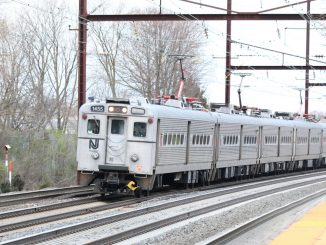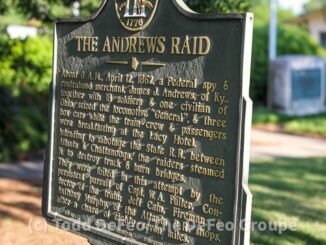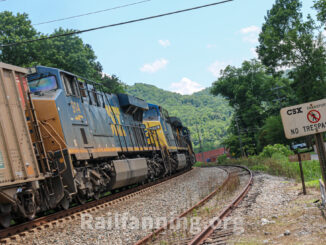
The New Jersey Rail Road, chartered in March 1832, opened seven miles of line between the Hudson waterfront and Newark on September 15, 1834.
The company gradually extended its road, opening the route to Elizabeth in 1835 and Rahway the following year. Its early trains relied on horses for their motive power, but the railroad received its first steam locomotive, the Newark, in 1835 from Baldwin.
The Newark first operated on Dec. 2, 1835.
An Experimental Test
In March 1835, the railroad tested a new locomotive, quite possibly Avery’s Rotary Steam Locomotive. However, the results for the experimental engine were apparently disappointing, reports from the era reveal.
It apparently “broke down a few miles from the Newark Bridge, forcing the passengers to complete their journey by foot.”
“Mr. Avery is unfortunate in the road on which he makes his first trial,” the American Railroad Journal reported at the time. “A straight and smooth road is necessary in order to attain a high velocity; but the Newark road, unfinished as it is, and in some places more or less affected by frost, with one or two very short curves, will not admit of the speed which this engine is capable of (attaining).”
Railroad officials apparently responded by telling travelers it would limit the locomotive to freight duty.
Success, Nonetheless
By April 1835, the railroad carried an estimated 11,000 passengers between Newark and New York (Jersey City), the Monmouth Democrat reported at the time.
In December 1835, the railroad welcomed the locomotive Newark. The Baldwin-built 4-2-0 first operated in December 1837. Two similar Baldwin locomotives — the New Jersey and the New Brunswick — followed in 1836.
However, most accounts indicate the railroad continued to use horse-drawn trains — at least in a limited capacity — between Jersey City and Newark until at least 1837, but maybe 1838, when the Bergen Cut, one of the line’s major engineering feats, opened. In order to start running trains, the railroad installed a temporary track around the cut.
“Several years were employed in construction before the work could be made available, though in our case, having no other competition than the stages on the old turnpikes and the steamboats by their circuitous route, we were enabled several years before the completion of our Road, by the use of horse power over Bergen Hill, to make our Road partially productive,” the New Jersey Rail Road and Transportation Company said in its 1853 report.





